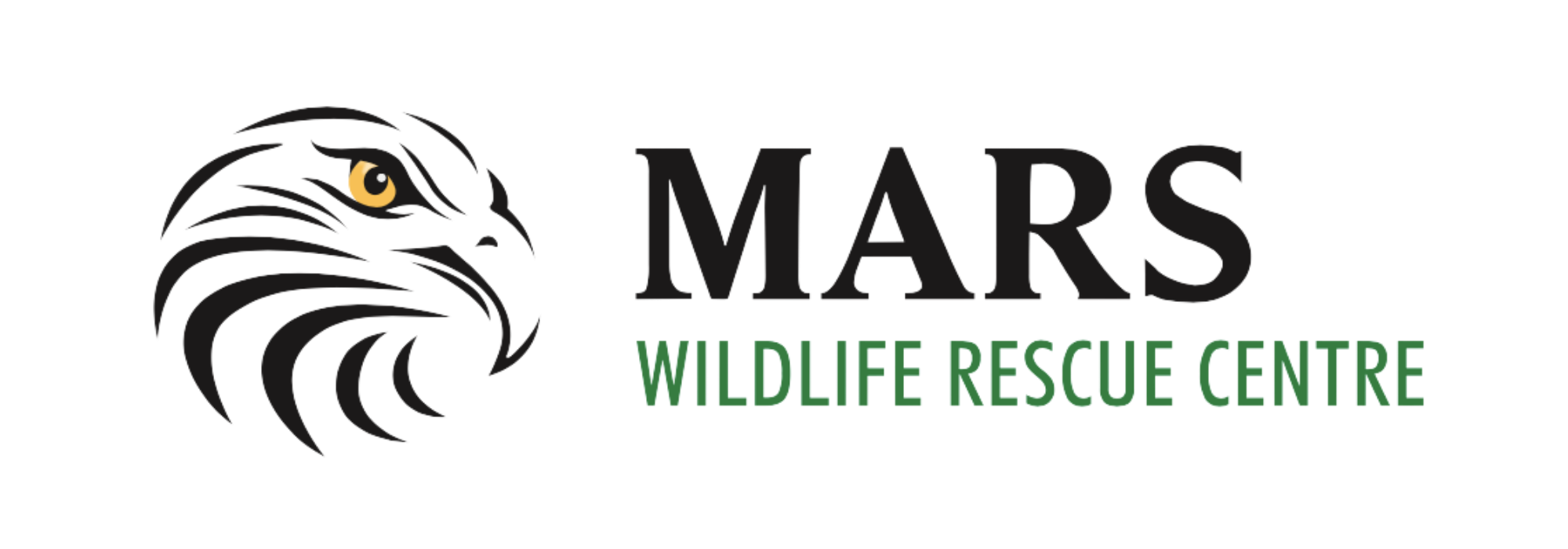MARS Moment 2009
by Sandy Fairfield MARS Education Coordinator
If we were living in the middle ages we may be more aware of Hawks and Falcons. Falconry flourished during that time and you could tell a person’s rank by the bird they carried: royalty carried Gyrfalcons, Earls Perigrine Falcons, Yoemans Goshawks, and a priest a Sparrow Hawk also known as a Kestrel.
In the 21st Century, we may be fortunate enough to see a Hawk on a drive through the farmlands of the Comox Valley. Soaring on thermal currents or perched on a tree or fence post, Red-Tailed Hawks are the easiest to spot.
Hawks are divided into three major sub-species: Buteos (large hawks who prefer open farmland), Accipiters (medium-sized hawks that live close to the forest edge) and Falcons (small hawks which can adapt to a variety of habitats including urban area). It takes a trained eye to distinguish one hawk from another, but generally size, wing and tail shapes can help with identification. Falcons in particular have distinct stream-lined wings designed for high speed flying and maneuverability. Examples of Falcons include Kestrels, Peregrines and Merlins. Falcons prey on other birds and will strike the prey mid-air, often disabling the bird and collecting it once it falls to the ground. Peregrine Falcons are the fastest flying birds reaching speeds over 80 mph. They have special adaptations in their noses called “baffles” which allow them to breathe at these high speeds.The Dark Brown Merlin is the most common Falcon found locally and can be seen hovering over prey just before striking. They can also be seen at bird feeders especially in winter. Local Accipiters include Coopers Hawks and Sharp-shinned Hawks: these hawks have short, rounded wings allowing them rapid flight between trees as they prey on other forest birds.The Red-Tailed Hawk is a Buteo: it has longer, broad rounded wings designed for soaring and gliding on thermals.
The most distinguishing feature of the Red-Tailed Hawk is its bright brick-red tail (this is acquired after the first year), which stands out especially against a bright blue sky. The tail is fan-shaped, actibg as a rudder to change direction during soaring flight and as a brake during landing.Red-Tails, like most birds of prey, are predominantly meat eaters. Dining mainly on small rodents and mammals, they will also eat other birds, plucking the feathers before dining on the flesh. They will patiently wait on a perch until the prey appears, then glide and swoop, landing from above with outstretched talons. Their talons are also used in defense and courtship; if cornered these birds will throw themselves backwards and ward off the intruder.Red-Tailed Hawks are not frequent visitors to MARS; they are versatile and adaptable and seem less prone to injuries. Last year, a Red-Tail was brought into care after being caught in a trap; unfortunately the injuries to its’ lower leg and talon were untreatable.
The hawk treated this month was an impact victim; likely it probably hit a window. It was unable to fly or find its normal food. All Birds of Prey cast pellets several hours after eating, and by dissecting the Red-Tail’s pellet we could determine what it had eaten. The regurgitated pellets contain indigestible materials such as bones, fur or feathers. None of these were present in this hawk’s pellet. Hawks are easily stressed in captivity (although when handled from an early age are the easiest for Falconers to train) and do not readily accept attention or food. This bird was very bright, alert and responsive and was released within a week to its rescue location, as Red-Tails are territorial birds.For more information on Hawks, including school presentations, please call 250-337-2021.

